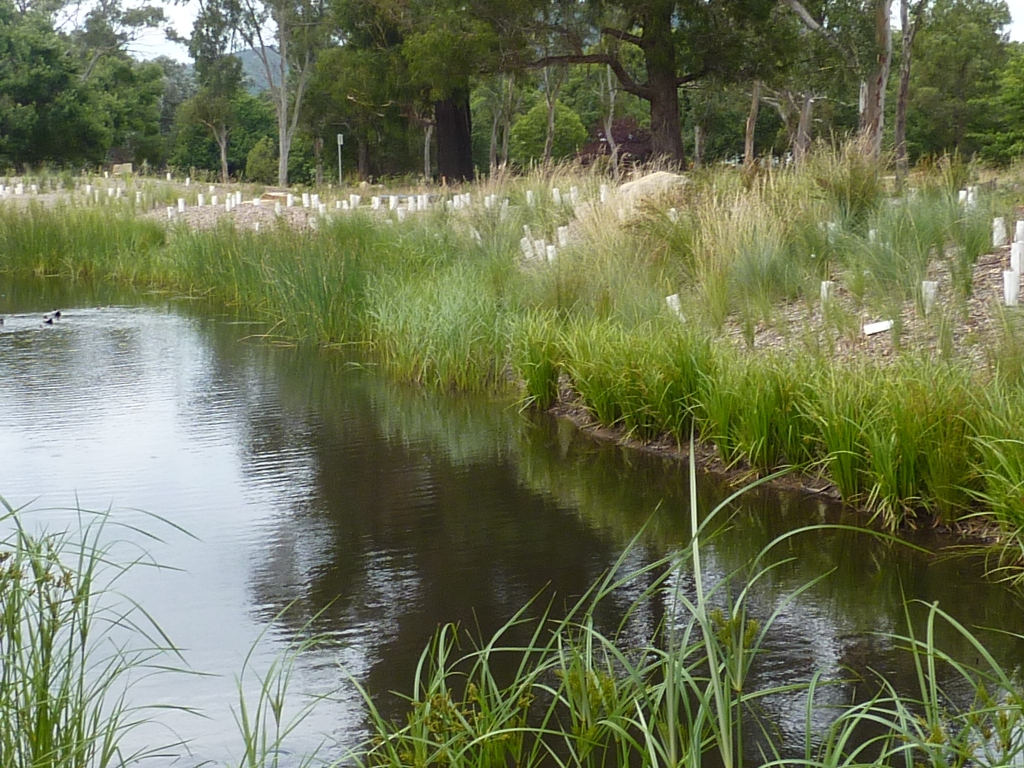The ACT Healthy Waterways Project has delivered new infrastructure including ponds, wetlands, rain gardens and swales. An explanation of the different types of infrastructure is provided below.
Wetlands
Wetlands help remove nutrients from stormwater by providing a habitat for water-loving reeds, grasses and trees which use the nutrients to grow. They remove sediments by reducing the speed of water flows caused by run-off. Wetlands attract a large diversity of wildlife, like birds and frogs, as well as providing opportunities for recreation and the enjoyment of nature.

Ponds
Ponds settle fine sediments by reducing the speed of water flows caused by run-off. They also provide temporary storage so stormwater can be reused. Ponds attract birdlife, reduce water-borne pathogens through UV sterilisation and offer a place for people to play, explore and learn. They work best towards the end of a catchment after coarse sediments and gross pollutants (litter) have been removed.

Rain gardens
Rain gardens (also known as bio-retention systems), look like a garden on the surface but have a storage and filtration structure underground that reduces nutrients from stormwater before it enters the drainage system. They have a small footprint and are suited to highly urbanised environments and smaller catchment areas.

Waterway restoration
Creek restoration is really about adapting and revegetating waterways. Once a creek is restored to suit changed water flows, run-off is slowed down and filtered, nutrient and sediment levels are lowered and erosion is reduced. Creek restoration also creates new habitats for native plants and animals.
Restoring a waterway to a more natural state (revegetating a stormwater drain, for example) allows it to filter urban run-off, reducing the nutrient and sediment levels that would otherwise flow further downstream into lakes and rivers. Restored waterways also help to prevent erosion, provide habitat for native plants and animals and add to the community’s shared space.
Gross pollutant trap
Gross pollutant traps are structures designed to remove a range of pollutants from waterways, including rubbish, coarse sediments, litter and some types of oil. They are often the important ‘first line of defence’ in treating stormwater, particularly in areas of high litter. Many of the ACT Healthy Waterways infrastructure projects include a GPT.


